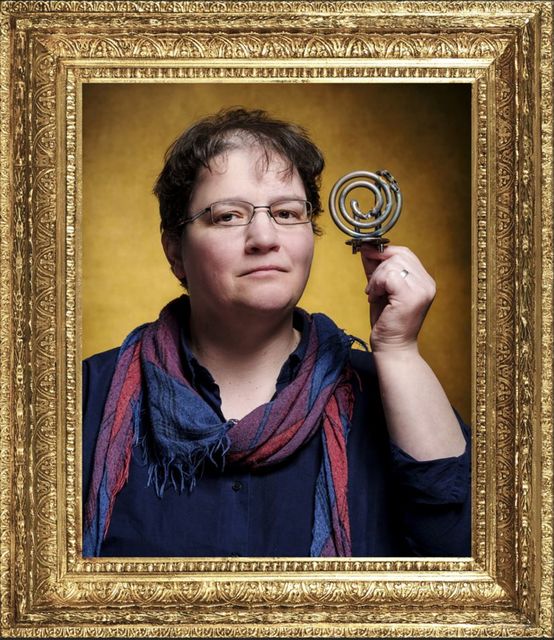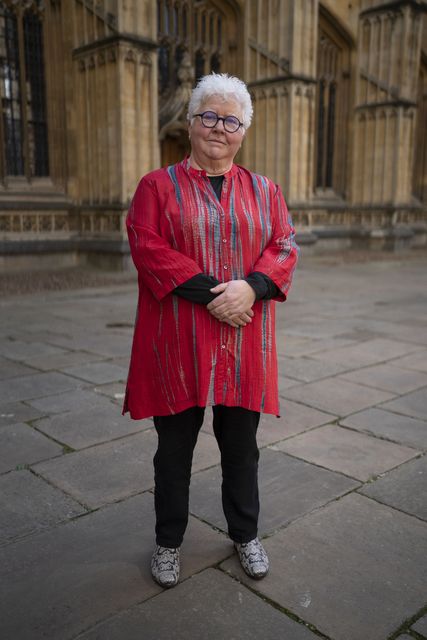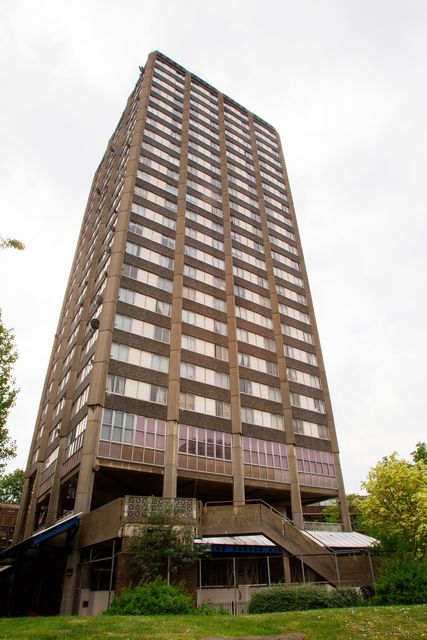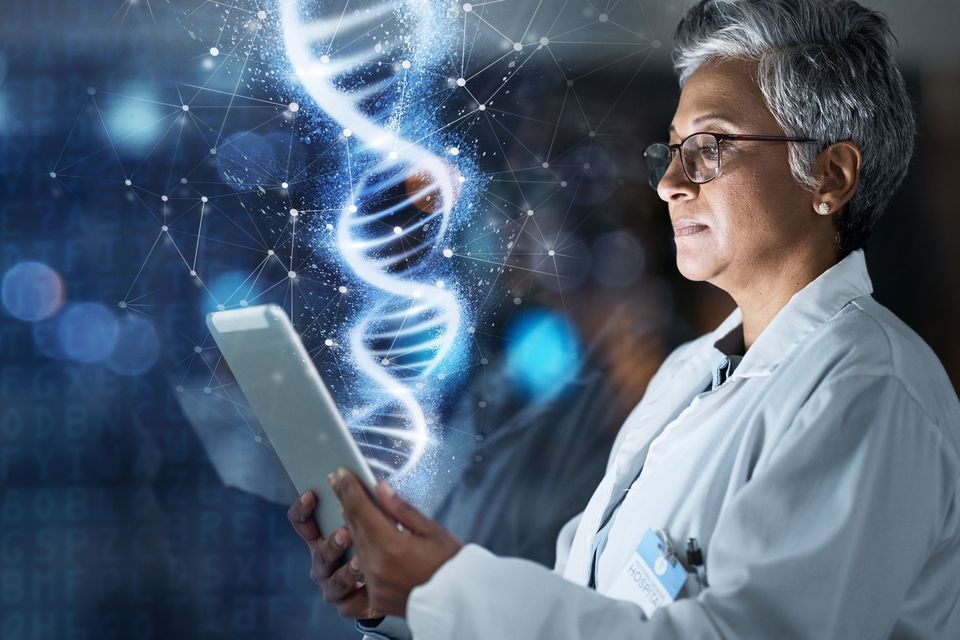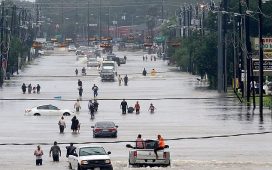Since then, scientific advances have been incorporated into detective work and technological innovation is propelling forensic science further forward.
Forensic chemist Professor Niamh Nic Daeid will be in Belfast tomorrow about the technological breakthroughs of the future such as virtual reality that may help crack previously unsolvable cases.
Speaking as part of the NI Science Festival, Professor Nic Daeid, a Professor of Forensic Science and Director of the Leverhulme Research Centre for Forensic Science at the University of Dundee, will discuss the evolution of forensic science in the interpretation of evidence.
“The fascination isn’t something that’s new, although we would probably think that it might be,” says Professor Nic Daeid on our ever-growing interest in forensic science.
“It started almost 150 years ago, when forensic science started to become a thing. Back in those days, you had the likes of Edgar Allan Poe writing murder mysteries. And you had, of course, Sherlock Holmes.
“There’s always been a connection between popular fiction, and what we do with science and the service of justice in the real world, which is quite interesting.
“It’s that genre of crime writing and crime fiction has almost developed synergistically with how science itself has developed in this space, at least.”
Professor Niamh Nic Daeid
What we see on the television, in shows such as Silent Witness, and what we read in crime novels brings together the different actors that are involved in the investigation of the crime.
In fiction to a degree, scientists are depicted as those who solve the case or find the clues — but that’s not their role in the real world, says Professor Nic Daeid, who worked with author Val McDermid on her factual book, Forensics: The Anatomy Of Crime.
“Forensic scientists, our job is, if we work at the crime scene and some forensic scientist will but not all by any means, our job there is to provide advice, to sometimes get involved in the identification and recording recovery retrieval of different aspects of what might become evidence. Different traces that might be there, whether they’re fibres or blood or drugs, and then to take those into the laboratory and undertake sometimes very meticulous examination, sometimes not.”
Their role is to try and understand the relevance of that finding within the context of the case.
“That’s how we create our evaluative opinions, so opinions relating to the value or the weights that that individual item of evidence might bring to the resolution of the question at hand,” says Professor Nic Daeid, who grew up in Dublin.
“Which is something that the jury has to decide rather than the scientists, which is: did this individual, are they guilty of whatever crime that they’ve been accused off?
“The scientist never gets involved in answering that question; that’s not our role, our role is to provide a sufficiency of information and explain that information in the right way so that the members of the jury or the judge can make that decision.”
Author Val McDermid
Professor Nic Daeid is one of the world’s leading experts in fire investigation. She gave evidence at the inquiry into the 2017 Grenfell Tower fire in which 72 people died.
The 2012 case where six children from Derby died in a house fire prompted a research study in the effectiveness of smoke alarms at waking children.
Professor Nic Daeid’s study, working alongside her research student Dave Coss, showed how children respond to different sounds and frequencies of alarm than adults.
Cases such as these would be understandably emotional for those who are to a degree involved, but emotion cannot cloud judgement, she says. Calling forensic scientists the ‘impartial witnesses for the court’, she explains their duty is solely to the court — and they are solely bound to deliver impartial and contextualised evidence.
“I’ll give you an example. If we found DNA evidence on a knife that was known to be used to stab somebody, we would locate that DNA evidence, we will recover it, analyse it and if it matched an individual.
“Then that gives you strong evidence that that individual had some sort of association with the knife whether they held it or whatever.
“That might be very impactful if that individual was new to the situation, somebody who didn’t live in a house where the knife was, or it might have no value.
“If you can show that that individual would have handled the knife anyway.
“So the evidence is the evidence, the DNA profile, but the context is key. And it’s delivering evidence in context is what forensic scientists do best.”
Forensic science milestones have shaped the approach towards crime and justice for centuries. For example, DNA profiling, which was used in the late 1980s as a result of the world’s first mass DNA screening. Over five thousand men in Leicestershire were screening, leading to the conviction of Colin Pitchfork for the murders of Dawn Ashworth and Lynda Mann. He was the first person to be convicted of murder based on DNA evidence.
Turn to 2024 and AI and virtual reality have the potential to revolutionise the way forensic science is conducted.
“The key thing in introducing new technologies into the forensic science domain, is that those technologies are not introduced without ensuring that they have the robustness in science that is required for the courts to have confidence in them,” says Professor Nic Daeid.
“Our ultimate theatre if you like for the scientific evidence that we will present in a court case is the court itself.
“There are various rules around admissibility of information and particularly scientific information into the courts.
“Part of those rules are that the particular technique or methodology or technology is accepted within the forensic science community, but also that it has a measurable scientific robustness that underpins it so that the courts can have confidence that it’s not a one off or it’s not a gimmick, that it’s actually something that has a real scientific value.”
Grenfell Tower, which went on fire in 2017
The opportunities which virtual reality may bring to the judicial system are threefold — firstly, as a tool for training tool for forensic scientist and crime scene investigators.
“That is where we can set up a crime scene as a training scene, but it’s in the real world. It’s not gamified, it’s not produced by a computer.
“We can create a virtual reality environment and then we can put our trainees into that virtual environment and train them on the methodology of crime scene investigation. But it’s the reality of the virtual reality [that] makes that experience very real.
“The second way of using virtual reality as a tool for forensic scientists or for crime scene investigators is to use it as a means of testing their competency, so it’s like a test of their ability to continue to do the job that they’re trained to do.
“The third way that we see it being used is within an operational context. So this is in live casework where the work that we’ve done here at the university has enabled us to create methodology for photographing crime scenes, so real scenes, that enables a virtual reality environment of that crime scene to be created.”
What this means operationally is capturing a crime scene in the early stages, being able to turn it into virtual reality and bring experts together in the virtual environment to talk through the necessary steps or sequence of tests which may be required.
“In those early days, when you’re working out the plan of action, or the approach that you’re going to take in a complex scene, then the virtual reality environment becomes really important. It could add real value because you can bring expertise from anywhere in the world into that scene, which is really valuable.
“And the other thing it does is it provides a snapshot of time because of course virtual reality scenes are just photographs, they’re just pictures, but it brings a snapshot of time in the early stages of that crime scene investigation that can then be made available to the defence so that they see what the police saw in the early stages rather than looking at two dimensional photographs. There’s a real value in that.”
It’s not just VR that could have a positive impact, with a range of processes at developmental stages. These include new technologies around DNA and whether it’s possible to use whole genomic sequencing.
“There are other amazing advances in science in areas like proteomics [study of protein structures and their cellular activities] and other types of studies that are looking at understanding what the environment looks like and the DNA that’s around in the environment,” says Professor Nic Daeid, “and whether or not we can tap into that area of research to see whether or not it has value within the justice system.”
Could the technological advancements prove useful when re-examining cold cases?
“It’s absolutely true that the developments in science and technology can be very useful in cold case reviews,” says Professor Nic Daeid. “DNA is a fantastic example. What we can do now with DNA in terms of the sensitivity of the technology that we use within the justice space, enables us to relook at old cases where previously we might not have been able to extract the DNA sample. And now with the techniques that we have, we can.
“It moves from no longer can I identify an individual from DNA? It now becomes well, how did the DNA get there? Those questions are the sort of salient points now that we have to investigate.
“But similarly, advances in modern chemistry and in our abilities to detect different types of compounds, whether they’re drugs or explosives or ignitable liquids or fibres or whatever they might be, is advancing and that enables us to go back to old exhibits and cold cases to see can we find evidence that has really sat dormant for over time, that with modern advances in detection technologies, can we now find things that might be revealing in those particular cases?
“The key thing around cold cases is the foresight really, that the scientists back in 20, 30, 40 years ago, had to protect the samples that were recovered, such that as science advanced into the future, there will be an opportunity to review those cases and to provide closure and all of the important aspects that closing out these cases will provide for survivors or victims of these crimes.”
Technological developments can help in the advancement of forensic science
As forensic scientists, Professor Nic Daeid says they’re “very determined” to serve communities as best as possible.
“When a case goes cold or it dries up, there’s always a desire to go back to that case, as science develops, to try to see if there’s something there that we can go back and maybe look at now and that might give a breakthrough.
“Particularly for cold cases, it’s always about the people that are left behind, and how you can bring closure to those people so that they have no they have they have some sort of answers.”
Professor Nic Daeid is quick to praise the interdisciplinary team at the Leverhulme Centre, the common goal of all is ensuring that, if a new technology is being introduced to the justice system, that it’s robust and fits the bill required by law.
There are oppositions to the industry, however, alongside cultural challenges which she says the forensic science community has worked hard on over the last number of years.
“One of the major cultural challenges is around people assuming that they never make errors, or assuming that their expertise is foolproof,” she says.
“Whereas, in fact, we’re all human and errors do occur, and we have to own those and we have to understand them. And we have to work harder to minimise them.
“Over the years, there’s been a reluctance to change in some of the areas of forensic science and in particular, areas that look at the comparison of features what we call feature comparison tasks. That’s fingerprints ballistics, bullets to guns, tool marks, matching tools to marks that might be left over behind on a surface.
“Similarly, matching footwear to shoe prints that you recover from the same, or tyres to tyre marks, all of these areas rely not on necessarily on a scientific measurement, but on a physical measurement. And then, on people’s experience of how often they would see things that are the same versus how often they would see things that are different.
“But there can be a real entrenchment in some of the ways in which people would interpret that evidence and in particular around areas like bias and an assumption that people never make mistakes and so on. So there’s a cultural piece that’s that is changing. And it’s accelerated in changing which is really good.”
Niamh Nic Daeid — the Future of Forensic Science takes place tomorrow at the Whitla Hall, Queen’s University at 2pm as part of the NI Science Festival. Tickets from £8. For more information see nisciencefestival.com

